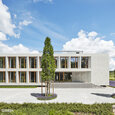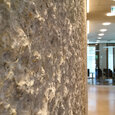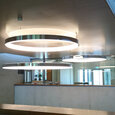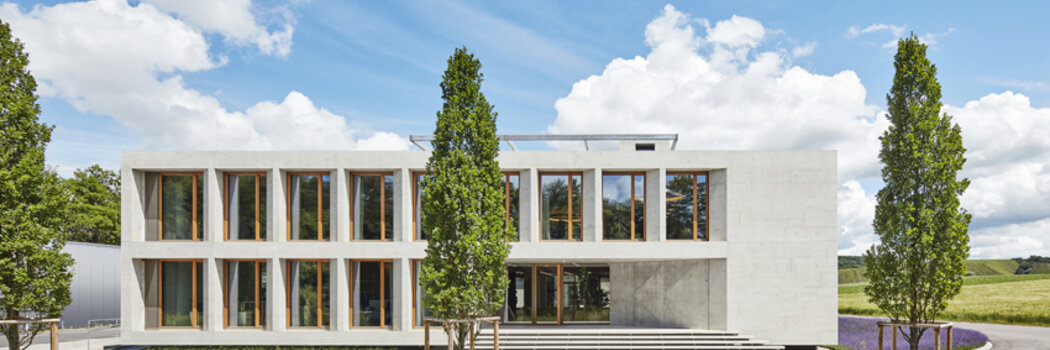
A Business Card in Design and Technology: Karl Köhler GmbH consequently opts for MICROSENS Fiber To The Office
Competence in Construction
After their vocational training, the brothers Horst and Karl Köhler joined the construction company founded by their grandfather in 1923. This was in 1990, and ever since they have been managing the company very successfully. Industrial projects, living space, commercial properties, or bridges – the 120 employees of Karl Köhler GmbH carry out innumerable projects in the south-west of Germany. Their customers hold the company in high esteem. This is not only due to its reliability – as one of the few building companies, Karl Köhler GmbH have their own staff of qualified specialists and technicians – but also based on the long-term experience with diverse constructional processes. The team of Köhler Bau needs a high-performance IT network to plan building projects and also to carry out administrative tasks.
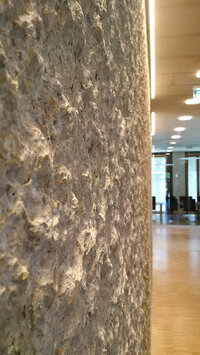
Future-oriented Planning
Already during the first talks about it, the idea was born that the new building should be completely cabled with optical fiber. After all, the company headquarters were to set standards as a reference object in terms of design and function. Uwe Drott, the commercial director and executive responsible for the IT department, explains: "The bandwidth demands of all applications are continuously rising. We are planning for the long-term and have definitively identified optical fiber as the technology of the future." The end devices in the offices, however, are to be connected with economically efficient standard copper cables. It was at this point that the designers quickly came to think of the devices of Microsens, the pioneer in the field of FTTO technology. The company NOZ Elektrotechnik GmbH, which was commissioned with the implementation of the IT infrastructure, already knew the products from previous successful projects. A test device installed on-site convinced Uwe Drott of the rate of performance:
- The devices are small and compact and can conveniently be installed in the parapet channel or in the puristic built-in closets specifically designed by Karl Köhler GmbH, in which they can be hidden.
- They accommodate four RJ-45 interfaces, which serve to connect PCs, printers, and phones in every office.
- They permit the usage of different VLANs.
- The devices support secure management standards and offer a high port security.
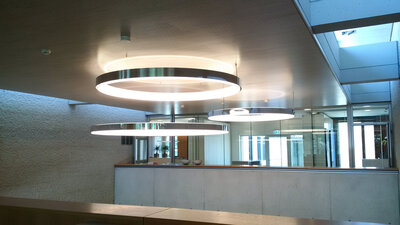
Flexibility in Execution
NOZ Elektrotechnik took over the cabling of the building and implemented a Gigabit Ethernet network in the new building with a total of 65 micro-switches as well as two redundantly designed central MICROSENS layer-2 switches. During the installation, the demands made on the network were further expanded: The PBX was meant to be migrated to Voice-over-IP and the end devices required a power supply over the data network. Since there was enough room beside the micro-switches in the offices, the designers decided at short notice to use MICROSENS PoE injectors. This way, the VoIP phones can now also be operated simply and quickly in a proper VLAN over the new network.
During the renovation of the older part of the building in the second phase of the project, the experts firstly replaced the existing Cat.6 cabling with fiber optic cables. Based on the experiences made during the first project phase, the technicians directly implemented the PoE-capable variant of the MICROSENS switches in this step, which means that the additional injector was not required this time. For the modernisation of the older part of the building, a central MICROSENS switch complements the existing Avaya infrastructure. Overall, the existing corporate building was connected to the new building both structurally and by means of the network.
Impressive Design
The new company headquarters of Karl Köhler GmbH fulfil their task as the "business card" of the company in every respect. The clear, two-storey building constructed of exposed concrete makes a clear impression and seems to rest in itself. The staff of the building company appreciate the communicative atmosphere within the corporate building just as much as the new infrastructure: Both the commercial applications and the CAD workplaces are running smoothly and without problems on the clients and access the terminal servers over the fast network. Karl Köhler GmbH is ready to face future requirements in every respect. Uwe Drott is convinced of that: "The fiber optic infrastructure will offer us full flexibility now and in the future. At the same time, the MICROSENS switches currently save us the expensive equipment of all PCs with fiber optic interface cards. Both the components and their implementation by NOZ Elektrotechnik were fully convincing."
About MICROSENS
Transmitting information via fiber optic connections offers numerous benefits. MICROSENS GmbH & Co. KG recognised this very early on. As one of the pioneers, the company has developed and produced high-performance communications and transmission systems in Germany since 1993. Individually matched to the demands of diverse usage areas and embedded in comprehensive concepts for individual sectors. But, above all, close to the customer. Technical challenges from customer projects are incorporated directly into product development. This way, IP-based automation solutions are created for modern buildings, cost-efficient network concepts for the office and workspace, robust and fail-safe solutions for industrial environments, optical transport systems future-oriented wide area networks and efficient coupling of sites and computer centres.






